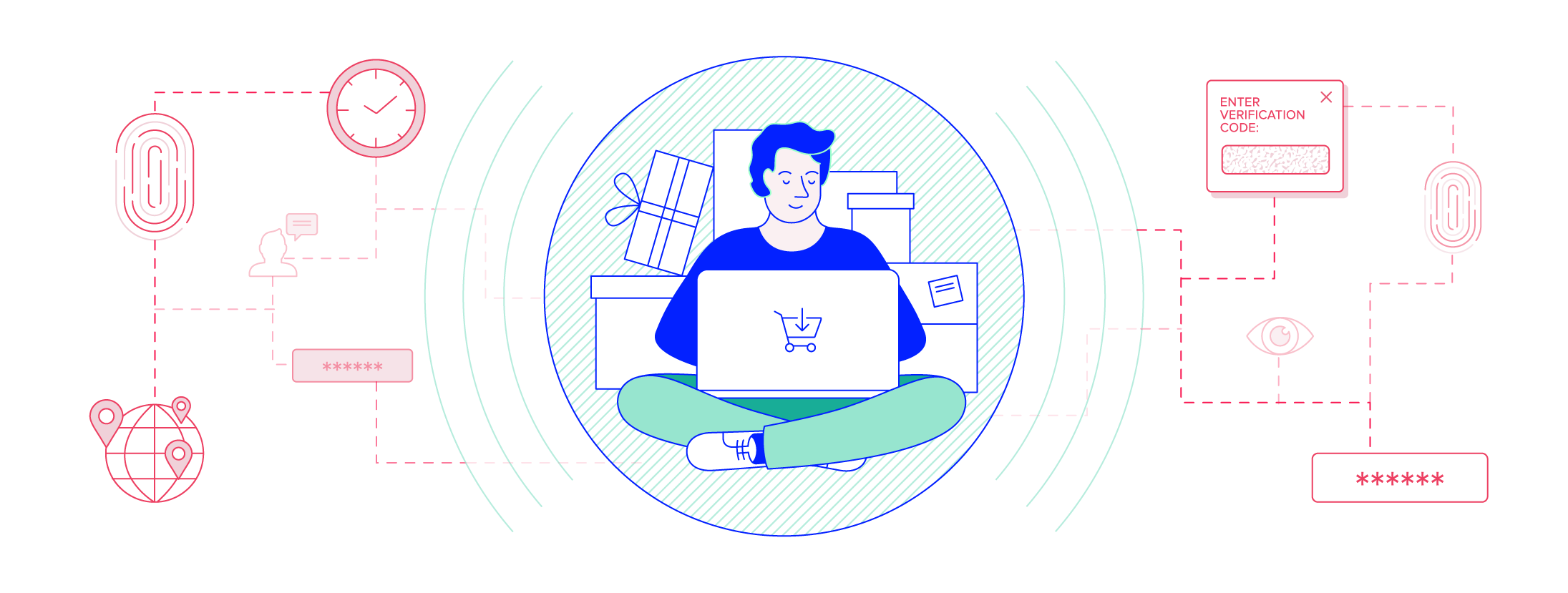How frictionless ecommerce risk management drives sales

This blog post examines how online businesses can stay ahead of the curve and use smart risk management to win over digitally adept generations.
With unlimited access to information, the proliferation of distribution channels, and the abundance of choices right at their fingertips, modern consumers have never been so influential on how business gets done. Customer-centricity is here to stay, and companies unable to provide exceptional experiences to their customers won’t survive. This blog post examines how frictionless eCommerce risk management strategies can drive online sales and win over consumers.
A false sense of security
Friction refers to anything that impedes the customers’ journey through the sales funnel. Forced registration, tedious form-filling, and time-consuming authentication processes are all elements that can frustrate shoppers and cause them to take their business elsewhere. In effect, inappropriate fraud prevention measures that hinder the shopping journey to the point of cart abandonment, often cost merchants more than actual fraud.
3D Secure 2.0 best illustrates the challenge online retailers face when forced to prioritize security over the convenience of the checkout process. While offering an added layer of protection, the extra step required to confirm the identity represents a painful point of friction. Depending on the industry or the device used to make the purchase, Riskified data shows that 3D Secure can lead to drop-off rates of up to 30%. In some Asian countries, those rates can reach 50%.
For merchants within the European Economic Area, PSD2 compliance will require strong customer authentication (SCA) for most card-not-present transactions. This mandated friction will impact everyone: the shopper, the retailer striving to offer the most convenient and fastest checkout experience, and the issuer who’s promoting cards as an easy online payment method. Fortunately, under PSD2, some orders will qualify for a Transaction Risk Analysis (TRA), that does not involve any friction for the customer. But merchants need to keep their fraud rates below specific thresholds in order to maximize TRA exemptions and minimize the PSD2 revenue hit.
Happier customers = higher revenues
In today’s competitive eCommerce market, relying on ill-adapted, outdated, or one-size-fits-all fraud prevention solutions is no longer sustainable. While 1 out of 26 disgruntled shoppers will complain about a bad customer experience, 91% will abandon their carts, and 51% never come back. Considering millennial shoppers have been coined ‘alpha-influencers’, effective in shaping the behavior and purchasing decisions of their social circles, it’s no wonder businesses see $62 billion lost annually due to poor customer experience.
Modern consumers want to be able to reach the products and services they use with the greatest ease possible, across digital and physical channels, and with seamless transitions between the two. Forrester’s Customer Experience Index found that CX top performers achieve a 17% compound average growth rate, besting brands lagging at the bottom by 14%. A single 1-point improvement in the CX Index generates an average revenue increase of $823 million over three years for a company with $1 billion in annual turnover.
A tailored online checkout process
Companies invest considerable resources in acquiring new customers. So when shoppers are ready to make a purchase and eager to spend money, why risk losing them by hampering the payment process? Or worse, why deny their transaction over the fear of fraud? Mutually important, security and customer experience should not represent conflicting interests: just like customer experience, fraud prevention can be designed with purpose, optimized, and personalized.
Today, sophisticated machine learning and human intelligence on fraud provide retailers with the ability to segment customers. With the right tools and insights, it is possible to eliminate friction for legitimate customers and introduce identity validation measures only in questionable transactions. Retailers can adopt a data-driven approach to better identify which types of verification measures shoppers find most convenient. Riskified’s data indicates that more than 80% of online shoppers respond to SMS confirmation, as opposed to a response rate of only 51% to emails.
Finally, merchants can use friction as a way to salvage a legitimate order in danger of being declined: asking shoppers for an additional email address or phone number while they’re still in the checkout phase adds minimal friction, but can help redeem as many as 50% of orders merchants would have otherwise declined.
Defining and refining online fraud management
You’re best positioned to understand your business, your customers, and the costs associated with every decision you make. Determining the most efficient strategy to ensure that friction is used only when absolutely necessary, while keeping fraud levels low on all channels, starts with using clear benchmarks. This means evaluating what is the potential cost of letting a fraudster through and comparing it to the cost of declining a good customer. Fraud is foremost the merchant’s problem, yet by creating friction, the issue is passed on to the customer. It is, therefore, imperative to calibrate the appropriate amount of friction for specific customers, introduced at the best moment and for the best reasons.
To stay competitive, it is more pressing than ever to implement a fraud prevention solution that is both scalable and dynamic, capable of examining a variety of parameters and designed for continuous improvement based on valid and verifiable metrics.


